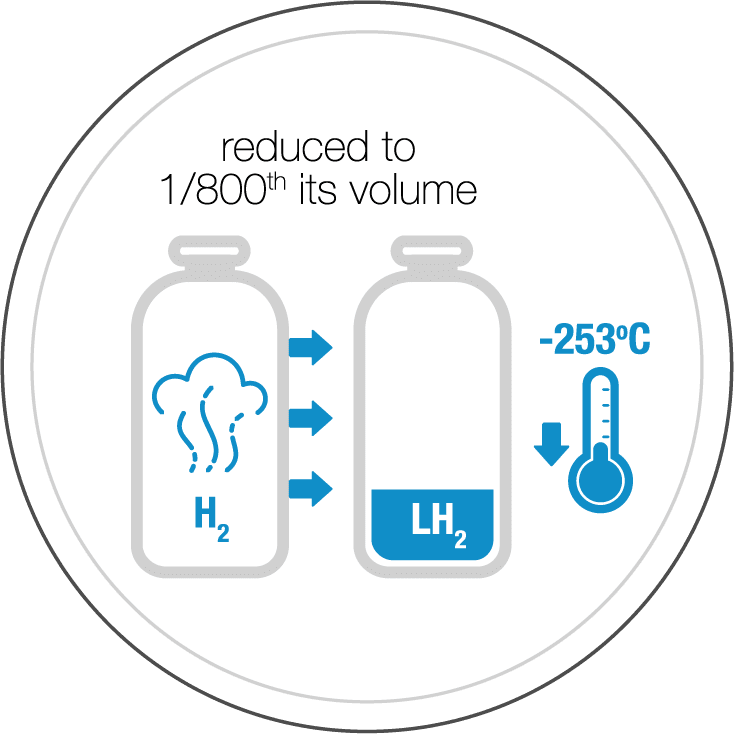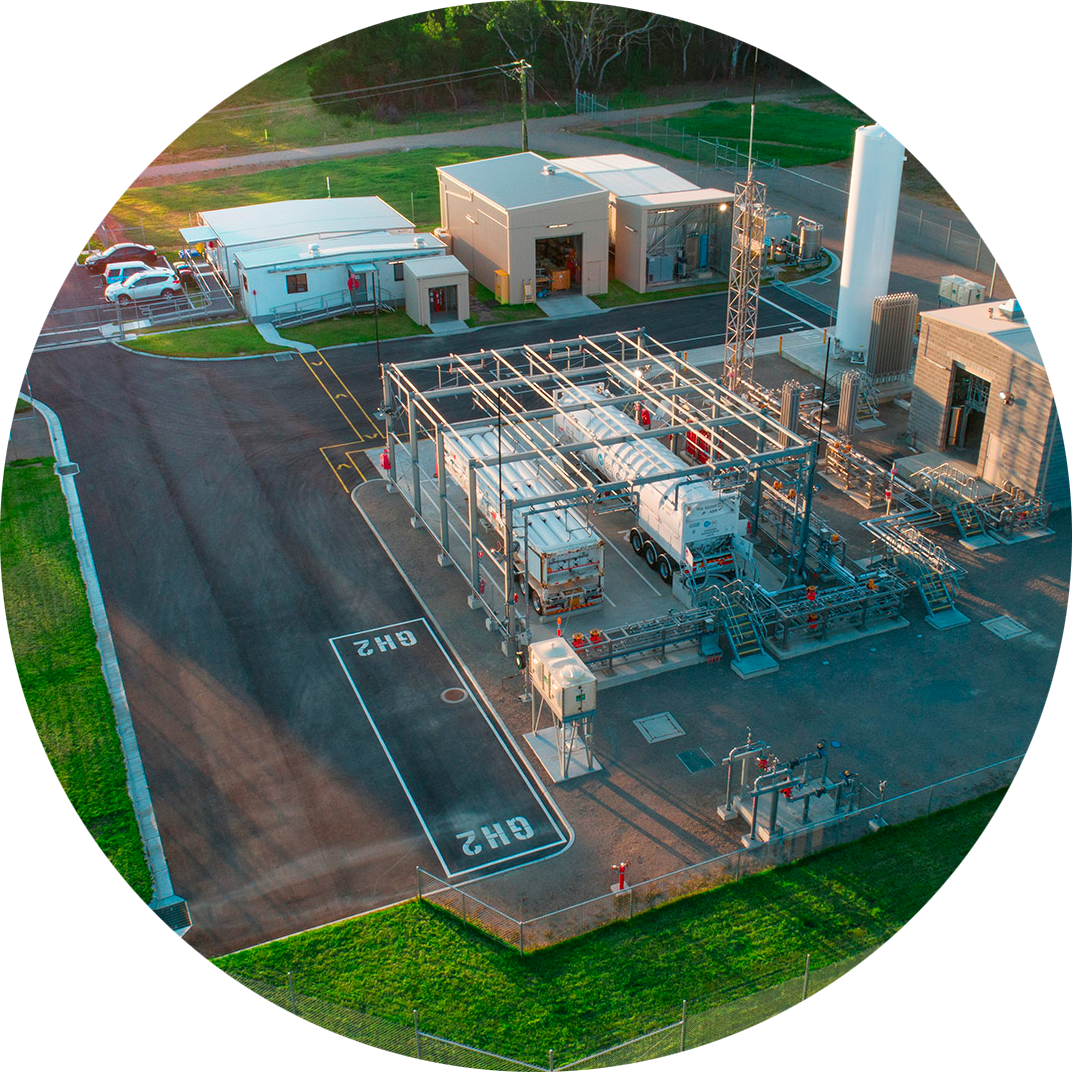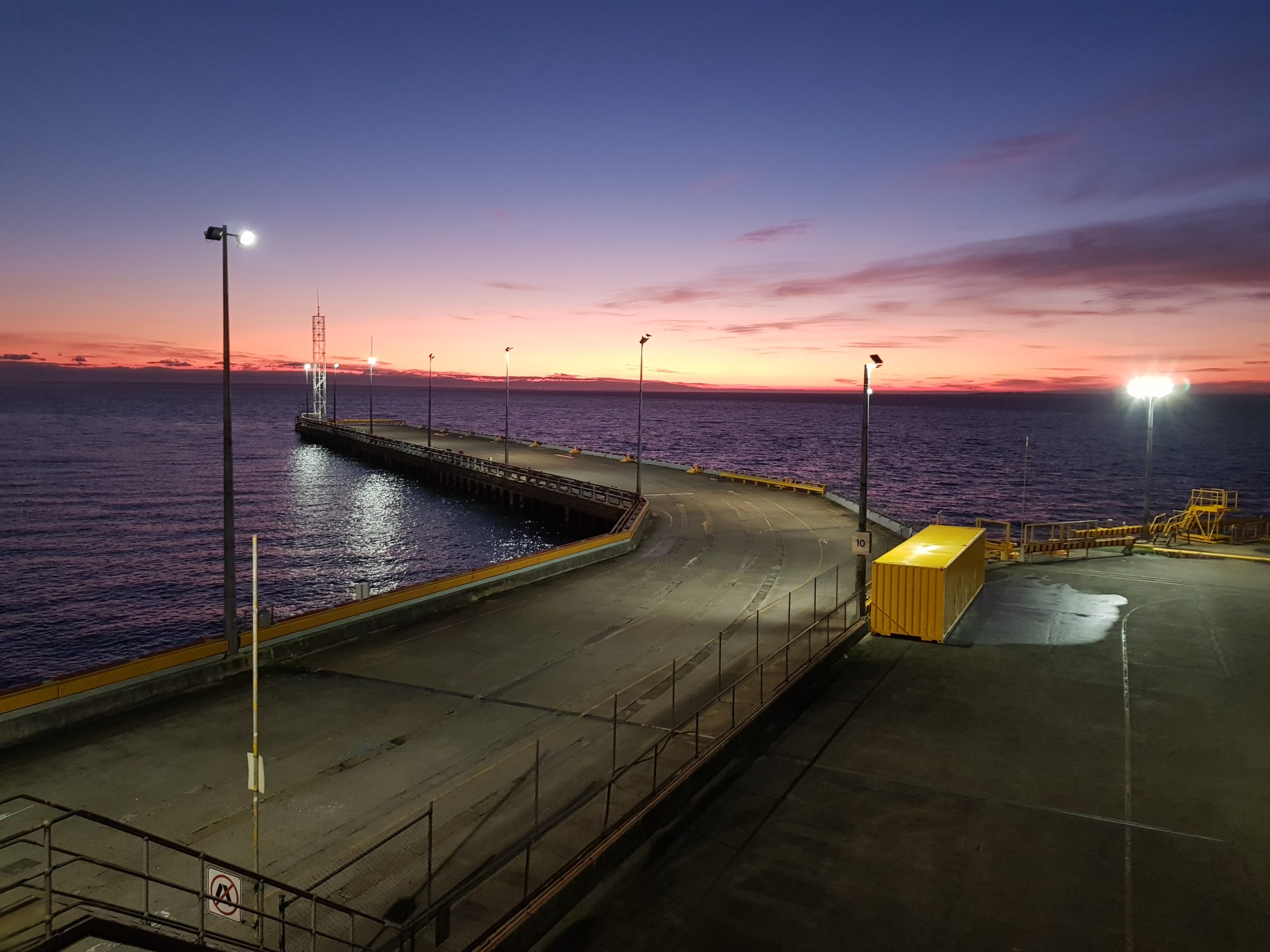Liquefaction and Loading
The newly constructed liquefaction, storage and loading facility converted hydrogen gas (H2) to liquefied hydrogen (LH2) using existing commercial technology already in use overseas.

Stage 4. Liquefaction of Hydrogen Gas
Location: Port of Hastings
The liquefaction plant used established technology already in use around the world to convert hydrogen gas into liquefied hydrogen (LH2). The liquefaction process cooled the hydrogen gas to −253°C and reduced it to 1/800th of its gaseous volume.
The plant is the first hydrogen liquefaction facility in Australia for demonstration purposes.

Stage 5. LH2 Storage and Ship Loading
Location: Port of Hastings
Liquefied hydrogen was held in a storage container before being loaded onto a marine carrier for transport to Japan. KHI developed a specialised system to load the liquefied hydrogen onto the carrier.
KHI has more experience than any other company in the storage and transport of liquefied hydrogen. The company built the storage tanks used to hold hydrogen rocket fuel at the Japan Aerospace Exploration Agency (JAXA) Tanegashima Space Centre. This technology has been in use for more than 30 years.
Status of the Port of Hastings plant:

